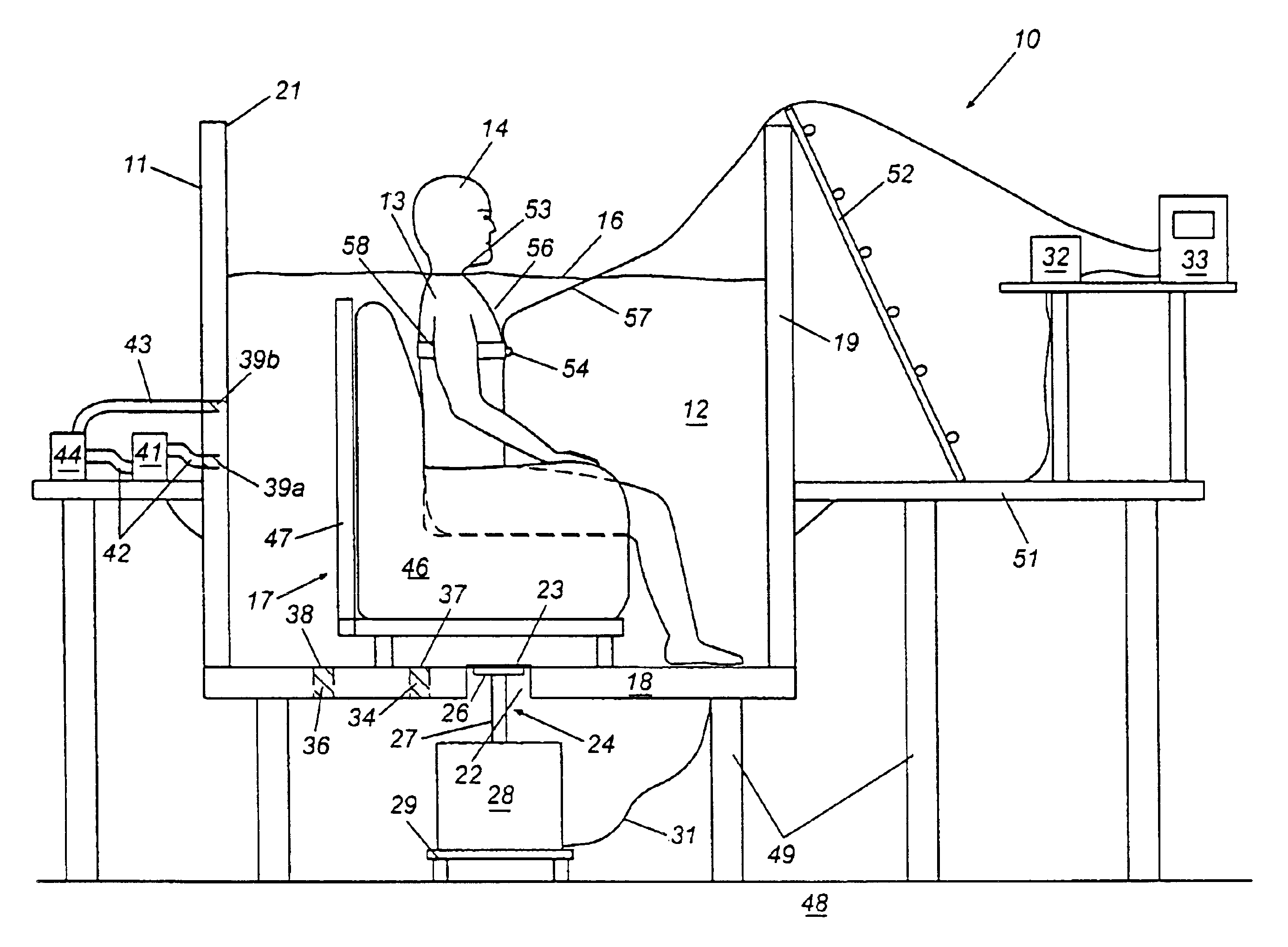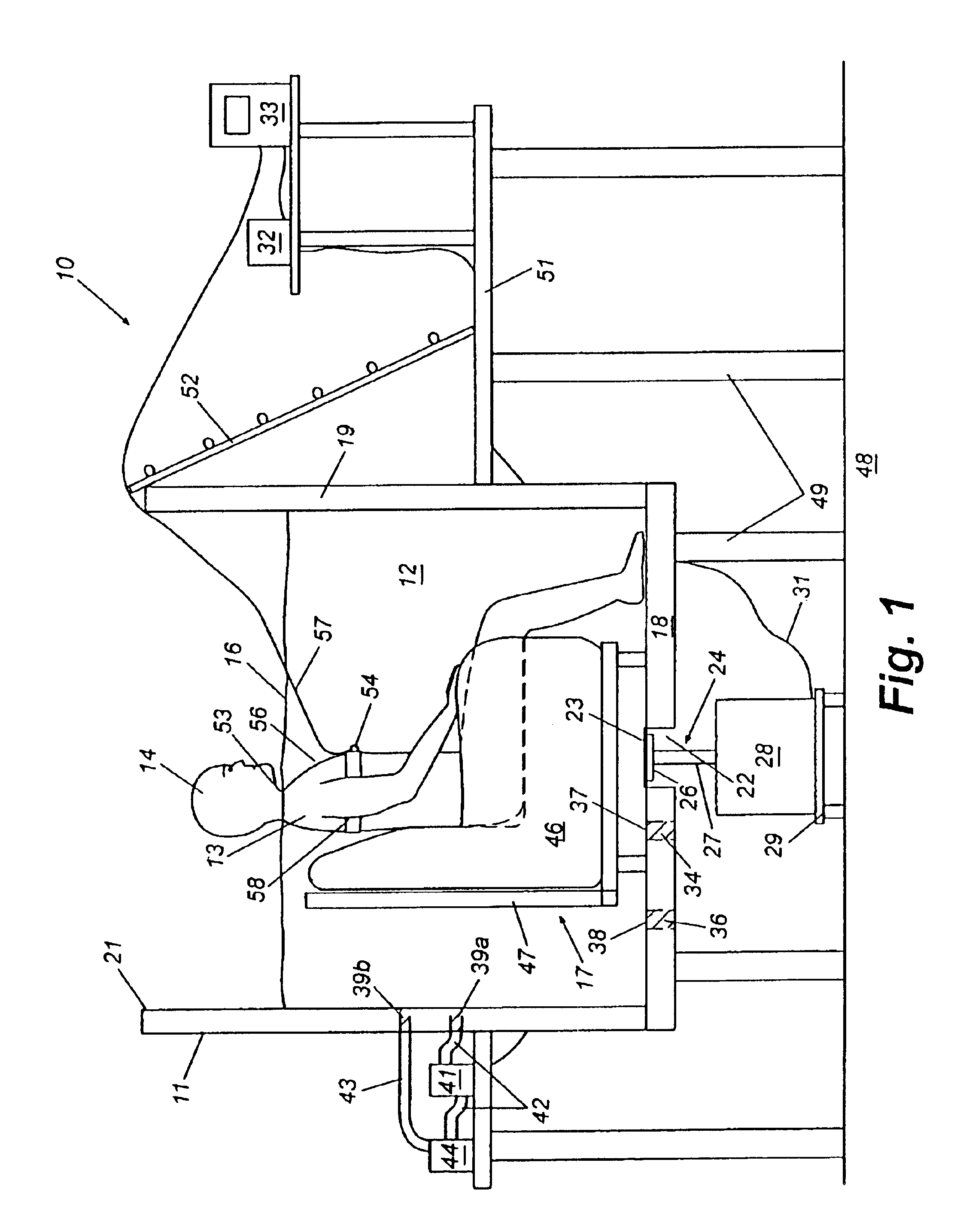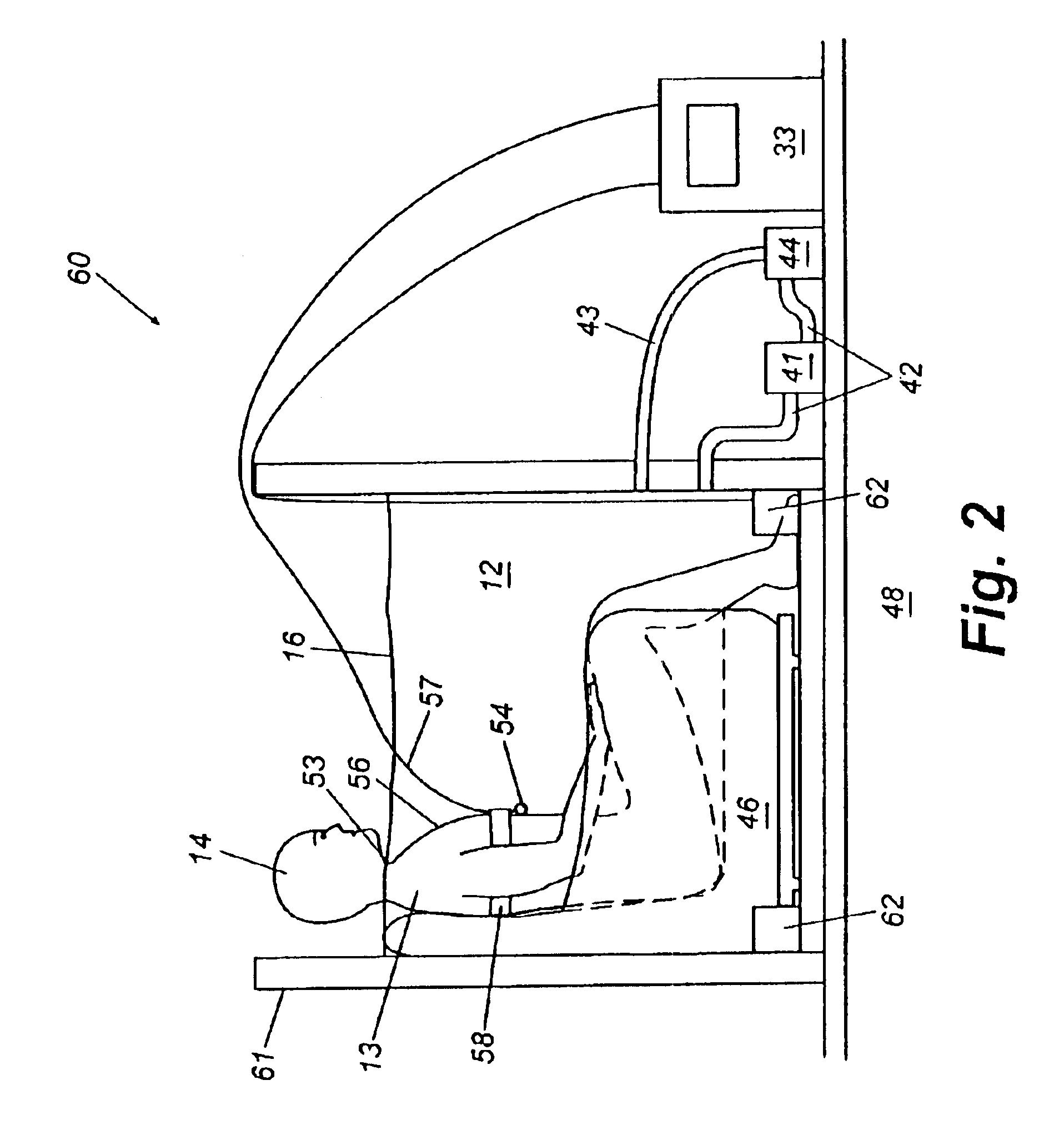Apparatus and method for implementing hydro-acoustic therapy for the lungs
a technology of acoustic therapy and an apparatus, applied in the field of medical patients' therapeutic treatments, can solve the problems of ineffective bacterial clearance, abnormally thick secretions, and damage to the airways of the lungs, and achieve the effect of more effective treatmen
- Summary
- Abstract
- Description
- Claims
- Application Information
AI Technical Summary
Benefits of technology
Problems solved by technology
Method used
Image
Examples
embodiment 10
[0024]The chamber 11 preferably comprises a cylindrically shaped cavity manufactured from a structurally rigid, or stiff material. The chamber 111 has a circular bottom wall 18 and a single, cylindrically shaped sidewall 19 attached to a periphery of the bottom wall 18. The top portion 21 of the chamber 11 is open. The particular shape of the chamber 11 is not required to be cylindrical; however, a cylindrically shaped chamber 11 is preferable because the cylindrical shape insures uniform sound reflection and eliminates edge reflections of acoustical waves. The chamber 11 could be shaped as a cube or spherical, for example. These features are generally beneficial to the HAT method described below. Further, the chamber 11 of the preferred embodiment 10 is large enough so that the patient 13 can easily fit in the chamber 11, as depicted in FIG. 1. The exemplary HAT apparatus 10 has a chamber that is 1.2 meters diameter and 1.5 meters tall. The cylindrically shaped wall 19 of the exemp...
embodiment 60
[0044]FIG. 2 depicts an alternative embodiment of a HAT apparatus 60 particularly suited for home use. The alternative HAT apparatus 60 is very similar to the first exemplary HAT apparatus 10, however, the chamber 61 is preferably constructed of a plastic or fiberglass material. Additionally, the chamber 61 is smaller than the chamber 11 of the first exemplary HAT apparatus depicted in FIG. 1. For example, where the chamber 11 of FIG. 1 is approximately 5 feet tall and 4 feet in diameter, the chamber 61 of the alternative embodiment 60 may be approximately 3 feet tall and only 3 feet in diameter.
[0045]Additionally, in the alternative embodiment of a HAT apparatus 60 a piston is preferably not used as an acoustic generator, but a transducer device, or series of transducer devices 62, are used. The preferred home HAT apparatus 60 uses an array of underwater speakers 62 as acoustic generators.
[0046]With the exception of the material used for the chamber 61, the size of the chamber 61 (...
PUM
 Login to View More
Login to View More Abstract
Description
Claims
Application Information
 Login to View More
Login to View More - R&D
- Intellectual Property
- Life Sciences
- Materials
- Tech Scout
- Unparalleled Data Quality
- Higher Quality Content
- 60% Fewer Hallucinations
Browse by: Latest US Patents, China's latest patents, Technical Efficacy Thesaurus, Application Domain, Technology Topic, Popular Technical Reports.
© 2025 PatSnap. All rights reserved.Legal|Privacy policy|Modern Slavery Act Transparency Statement|Sitemap|About US| Contact US: help@patsnap.com



